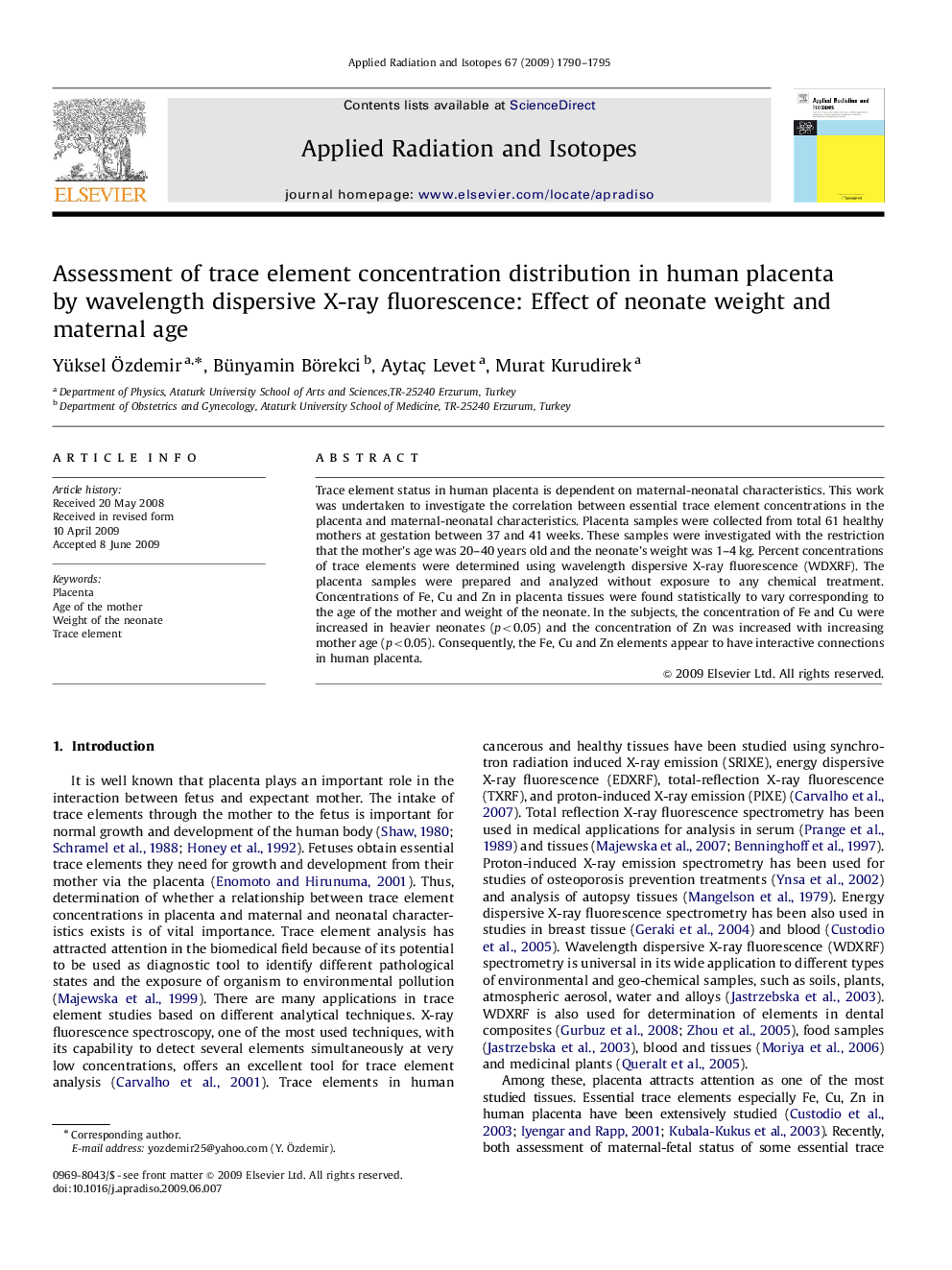| Article ID | Journal | Published Year | Pages | File Type |
|---|---|---|---|---|
| 1876748 | Applied Radiation and Isotopes | 2009 | 6 Pages |
Abstract
Trace element status in human placenta is dependent on maternal-neonatal characteristics. This work was undertaken to investigate the correlation between essential trace element concentrations in the placenta and maternal-neonatal characteristics. Placenta samples were collected from total 61 healthy mothers at gestation between 37 and 41 weeks. These samples were investigated with the restriction that the mother's age was 20-40 years old and the neonate's weight was 1-4Â kg. Percent concentrations of trace elements were determined using wavelength dispersive X-ray fluorescence (WDXRF). The placenta samples were prepared and analyzed without exposure to any chemical treatment. Concentrations of Fe, Cu and Zn in placenta tissues were found statistically to vary corresponding to the age of the mother and weight of the neonate. In the subjects, the concentration of Fe and Cu were increased in heavier neonates (p<0.05) and the concentration of Zn was increased with increasing mother age (p<0.05). Consequently, the Fe, Cu and Zn elements appear to have interactive connections in human placenta.
Keywords
Related Topics
Physical Sciences and Engineering
Physics and Astronomy
Radiation
Authors
Yüksel Ãzdemir, Bünyamin Börekci, Aytaç Levet, Murat Kurudirek,
